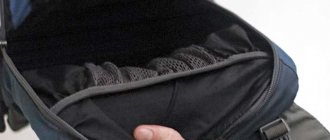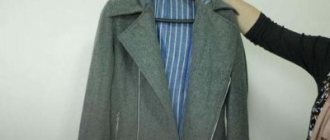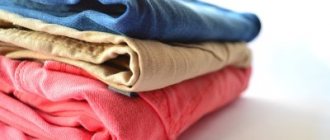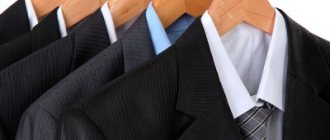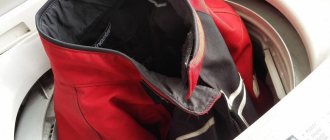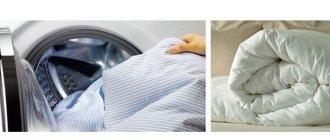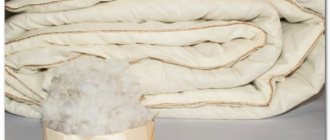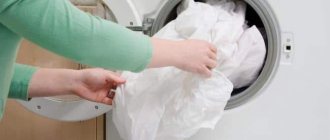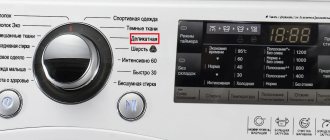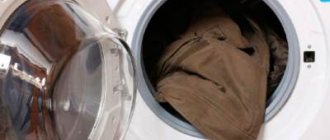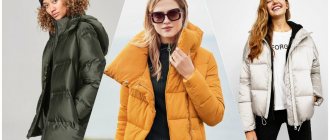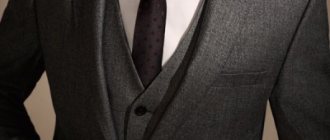House slippers are a must-have attribute that protects against colds and envelops your feet in warmth. Their everyday use leads to dirt and unpleasant odors, so it is better to choose products made from easy-to-wash and easy-to-clean material. Proper washing will keep a pair of shoes intact and extend the wear period.
Is it possible, which ones are not?
It would seem, why not wash your slippers in a washing machine - it’s quick and effective. Even if they fall apart, you can throw them away and buy others to replace them.
In reality, it is the machine that may suffer the most, not the slippers themselves . If you spin low-quality cheap shoes, they will most likely fall apart during washing and all the fallen debris will remain in the tank or clog the drain hole.
It is not recommended to machine wash low-quality shoes with glued soles and other decor with poor fixation. The same rule applies to hand washing. Such shoes should be disinfected by treating with alcohol or vinegar.
The easiest way to wash slippers in an automatic machine is that they are not much different from socks (they do not have a clear shape). These include knitted wool slippers.
It is better to wash the following types of slippers by hand:
- with a hard sole so that it does not deform;
- having poorly glued decorative elements;
- heavily worn and torn, from which threads are already sticking out;
- made of faux fur, which frays a lot.
And in order not to be mistaken about how to wash your slippers, you must first look at the label, which contains the manufacturer’s care recommendations.
Is it possible to wash slippers in a washing machine?
House shoes are usually made from wash-resistant materials. If the soles of the slippers are securely stitched, load them into the drum. Taped flip flops can fall apart, and household appliances can become clogged with threads and cardboard from the soles.
It is dangerous to load items with decorations into the machine. They can get stuck in machine parts.
Washing slippers in a machine consists of the following steps:
- Clean the sole from dirt.
- Use a cloth cover to protect the drum cover from friction.
- Fill the cuvette with detergent and select the program.
Slippers, similar to socks, can be loaded into the machine along with other underwear.
Step-by-step instruction
As has already been clarified, it is permissible to wash slippers in a washing machine, only if they are well sewn . In other cases, the manual cleaning option remains. Each of the methods will be discussed further.
Machine processing
Before loading slippers into the washing drum, they are thoroughly inspected for protruding threads and tears. If defects are found, they are corrected immediately. You also need to wipe off any stuck dirt on the sole (if any) so that it does not fall off during the washing process. To do this, use a sponge or a stiff brush.
Then proceed as follows:
Place shoes in a special bag for washing.
If you don't have one, you can use a pillowcase. This measure will help prevent deformation of the slippers and protect the drum from breakage. Then the package is placed in the machine.- Fill the cuvette with detergent - it is advisable to use gel, since the powder is difficult to rinse out.
It is not necessary to add conditioner or bleaching agents. - Set the appropriate mode: “For shoes”, “Delicate” or “Manual”, at a temperature of 35-40 ᵒC.
- Turn off the spin function or set it to minimum speed and start the program.
This video will show you how to wash slippers in a washing machine:
Hands
If it is safer to wash slippers by hand, then adhere to the following algorithm:
- Water at a temperature of no more than 40 ᵒC is poured into a basin or other large container.
- Add the required amount of washing powder or other detergent. Then mix it with your hand until completely dissolved and foam appears.
- Dip slippers into the solution and leave to soak for a quarter of an hour. Then they are rinsed in running water.
- Carefully wring out the shoes by lightly squeezing them with your hands without sharp twisting.
Now all that remains is to properly dry the products.
Tips and tricks
Let's summarize how to clean house shoes.
- If the slippers have decorative elements, you need to make sure that they are firmly fixed to the shoes. Locks, zippers, rivets or Velcro - everything must be securely attached or closed.
- All foreign objects, for example, leaves or pebbles, which could accidentally get into the slippers, must be removed. Otherwise, such items falling from the slipper into the drum can lead to damage to the washing machine.
- For more accurate and gentle washing, it is recommended to put house shoes in a special washing bag, which will protect the shoes from mechanical stress and improve the quality of the wash itself. If you don’t have such a bag at hand, you can replace it with an old or unnecessary pillowcase.
- It is forbidden to wash more than two pairs of shoes at a time, as the machine may be overloaded and eventually break down.
- The optimal temperature for washing slippers is 30 ℃. The mode should be selected “Gentle wash”. This way the shoes will definitely be preserved in their original form.
- It is better to turn off the spin function so as not to expose soft shoes to unnecessary mechanical stress.
- You can use bleach if these are cotton or synthetic slippers. It is prohibited to use bleach when washing house shoes made of suede, sheepskin and felt. Also, when using bleach, pay attention to the color of the slippers; light-colored items will not benefit from this product, but dark slippers will lose their color and may acquire an unattractive yellowish tint.
- Each family member should have their own personal slippers - this is one of the basic rules of hygiene. Each guest should have either disposable slippers or products that can be washed frequently, either in a washing machine or by hand.
Also remember, you cannot wash your slippers more than twice a month. Repeated washing can cause the fabric to warp.
When buying slippers, it is better to immediately find out how to wash them - by hand or in a washing machine. If the seller is not competent, pay attention to the tags that are always on new slippers - they describe washing methods for a specific model of slippers.
Differences in the rules for washing house shoes made of different materials
Since home slippers can be made from different materials, when choosing a cleanser, they are guided by this indicator.
Sheepskin
Caring for sheepskin slippers involves some special features . Wash them exclusively in warm water, as hot water can cause shrinkage. Laundry or baby soap is used in the process.
After the main wash, the items are rinsed in cool water and not wrung out in the usual way (twisting, stretching). You need to shake them and place them on a towel.
In the intervals between washing, sheepskin slippers are treated with any water-repellent agent or cosmetics are used to care for suede. You can find out how to wash sheepskin here.
Felt
In order not to spoil felt house shoes, when washing by hand or machine, a certain temperature regime of water is observed - no higher than 30 ᵒC . Before washing, slippers are soaked for 10-15 minutes in warm water.
The final step is rinsing in cool running water. Products of this kind are dried in the same way as those made from sheepskin.
Synthetics
Synthetic threads are more resistant to wear . Therefore, such shoes can be washed either manually or in a washing machine using gel-like detergent compositions.
It is not recommended to wring it out by twisting it - a light shake is enough to drain the excess water. Then the slippers are placed at an angle in the open air and wait until they dry naturally.
Suede
It is important to understand that suede shoes should not be cleaned in a washing machine or soaked before hand washing.
To remove dirt, you need to use a special suede shoe care kit . A stiff brush, sandpaper or nail file is suitable for this.
After removing dirt, the shoes are wiped with a water-repellent agent. Clean the inside of suede shoes with wet wipes.
This article will tell you how to properly wash suede shoes.
Cotton
The most common material for sewing house shoes is cotton . These shoes can be safely washed in a washing machine. Just set the delicate mode at a temperature of no more than 40 ᵒC (so that the products do not lose their shape or shrink).
If the machine has a drying mode, then use it, but at low heat. Read more about washing cotton products here.
Drying rules
Well-dried house slippers retain a presentable appearance for a long time and provide comfort to the feet of their owner.
However, you should not machine dry them or leave them on a hot radiator overnight. House shoes must be dried naturally in the open air or in a well-ventilated area.
A warm floor will be an excellent assistant in the matter of drying. Its surface does not heat up so intensely as to harm indoor shoes. In this way, the moisture from the slippers evaporates gradually, but it still happens much faster compared to drying at room temperature. After hand or machine washing without spinning, the slippers remove excess moisture using soft, squeezing movements.
Felt slippers or wool products are laid out on a towel, which prevents them from losing their shape. It is strictly forbidden to squeeze shoes made of such material, even with your hands.
How to remove stains?
Even with the most careful wearing, stains will inevitably appear on your slippers. Most are easy to clean with regular machine or hand washing. But some products are not recommended for frequent soaking. Not all stains can be removed with standard detergents.
Here are some effective recommendations for removing stains of various origins:
Fat can be easily removed using semolina or chalk.
First, clean the slippers from dust with a brush. Then rub the problem areas with cereal or chalk flour and leave for several hours (preferably overnight). After this, comb out the shoes with the same brush.- Coffee stains can be quickly removed by soaking shoes in a cold saline solution. This option is not acceptable for felt and sheepskin products.
- Stains from berries and jam can be cleaned with vinegar or lemon juice.
- The ingrained yellowness or grayness is removed with gasoline or starch pulp (diluted with water). Apply the composition and wait for it to dry completely, then go over it with a vacuum cleaner or brush.
Sheepskin slippers have a leather side. So it is effectively cleaned with potato skins. They are pre-washed in water and ground to a pasty state. Then applied to the surface of the shoe.
If the contamination is severe, you can additionally scrub with a brush . The remaining product is removed with a damp cloth and the skin is wiped clean with it.
In addition to folk remedies, there are many ready-made stain removers that are sold in hardware departments. When choosing, you should take into account the material from which the slippers are made.
What are the benefits of a cork insole?
Cork oak bark has unique hygienic properties. Natural cork, even in a humid, aggressive environment, can resist rotting for centuries and prevent the formation of fungus. It’s not for nothing that it is used to cap bottles with various liquids.
Interesting materials:
What microelements are in peanuts? What fillings are there for cakes? What directions are there in 10th grade? What settlements are there in the Krasnodar Territory? What nations are there in Kazakhstan? What responsibilities do owners have? What windows are there in Windows? What octaves are there on the guitar? What organs does the Cuckoo flax have? What organs do animals have?
Whitening
House shoes often need to be bleached to restore their original fresh appearance. This applies to white slippers. Both improvised and ready-made industrial products will help in this matter.
Sheepskin is well bleached dry using crushed chalk , potato starch or wheat flour. Any of these products are sprinkled on the fur and then carefully combed out with a brush. An alternative would be regular baking soda.
The following composition also effectively whitens: add a few drops of ammonia and peroxide to a glass of water. This mixture is poured into a spray bottle and sprayed onto the slippers.
When washing white slippers in a machine, you can add bleaching agents (for example, Vanish) to the tray . It is recommended to pre-soak yellowed or grayed cotton items in water with added bleach.
How to dry it?
It is important not only to properly wash your slippers, but also to dry them. It is advisable to place them on the balcony, where there is good circulation of fresh air and no exposure to direct sunlight.
Shoes should be straightened and crumpled paper (not newspaper) should be pushed inside. Periodically, the filling is replaced with fresh one, which will speed up the drying process.
Do not dry your slippers on a radiator or with a hair dryer, as this can lead to their deformation..
Read more about how to dry shoes here.
